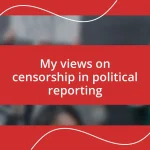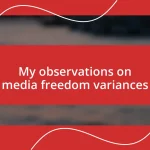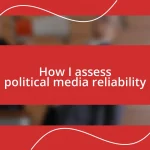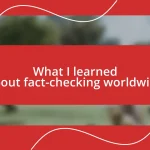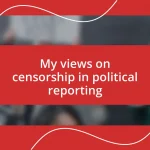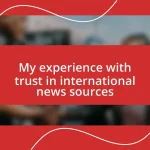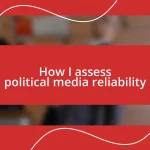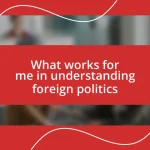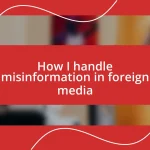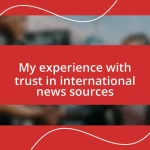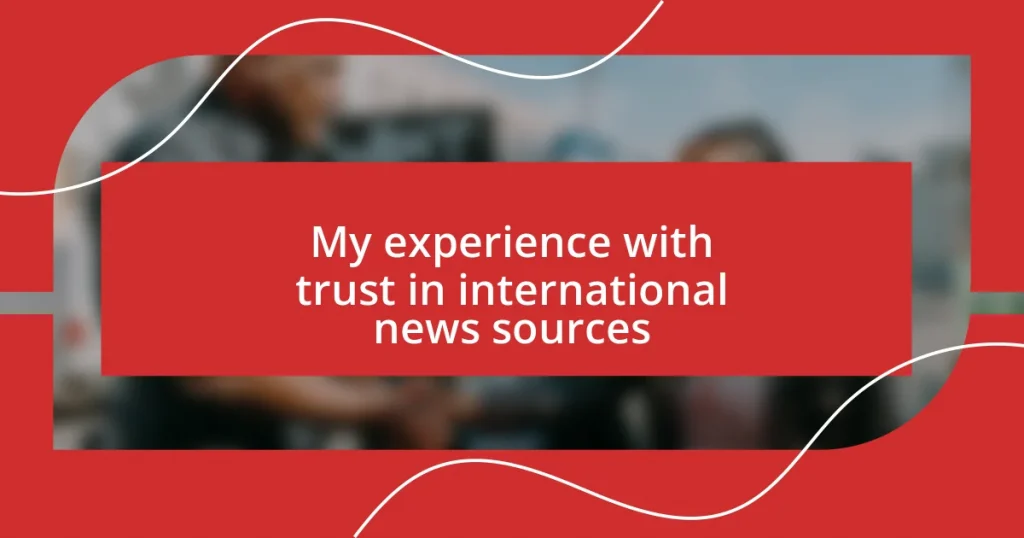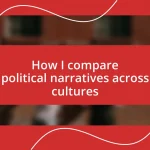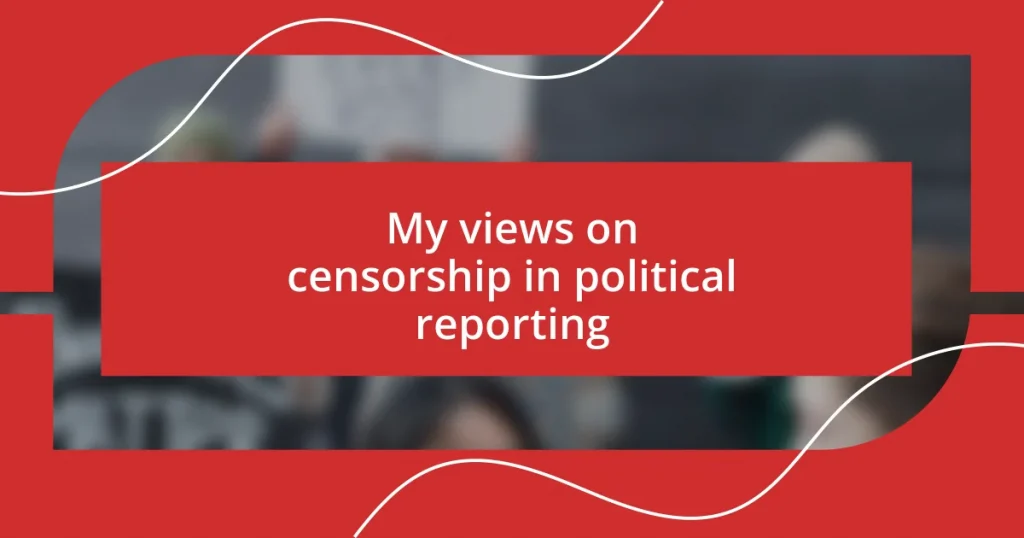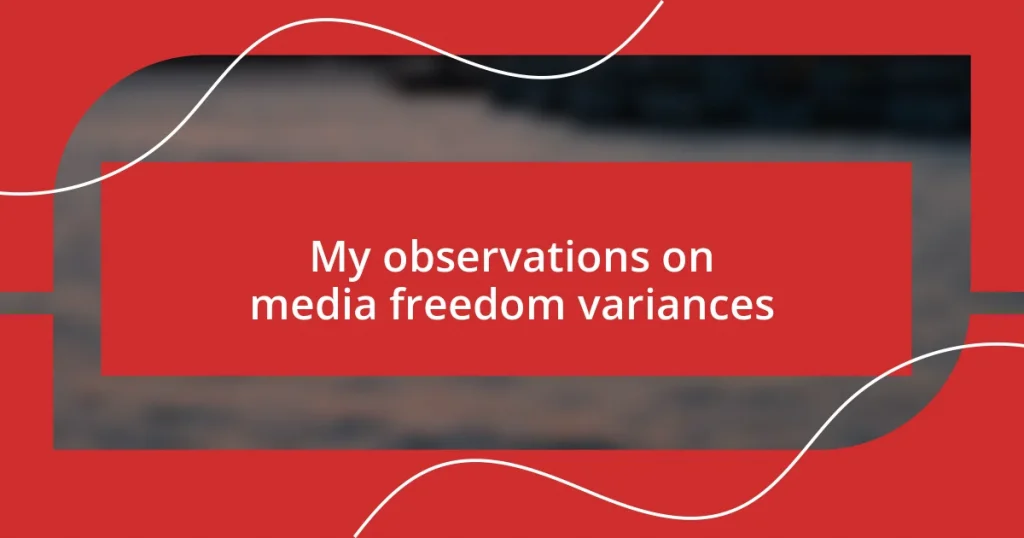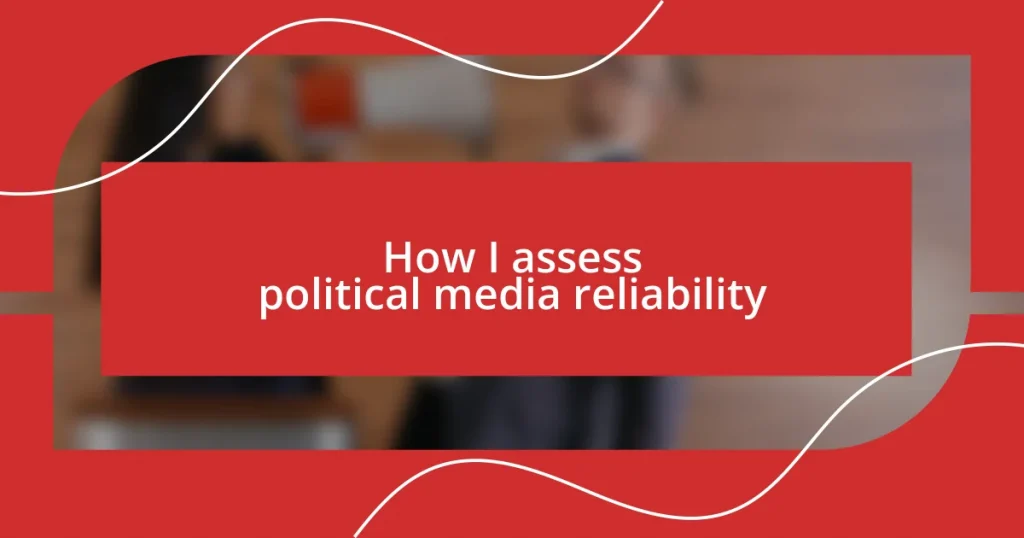Key takeaways:
- The credibility of news sources significantly affects how we perceive global events, highlighting the need for critical thinking and diverse perspectives.
- Personal experiences with misinformation, particularly on social media, reinforce the importance of fact-checking and recognizing emotional responses to news.
- Building informed media consumption habits involves cross-referencing stories, checking the context, and understanding the authors behind the articles to foster trust and enhance understanding.
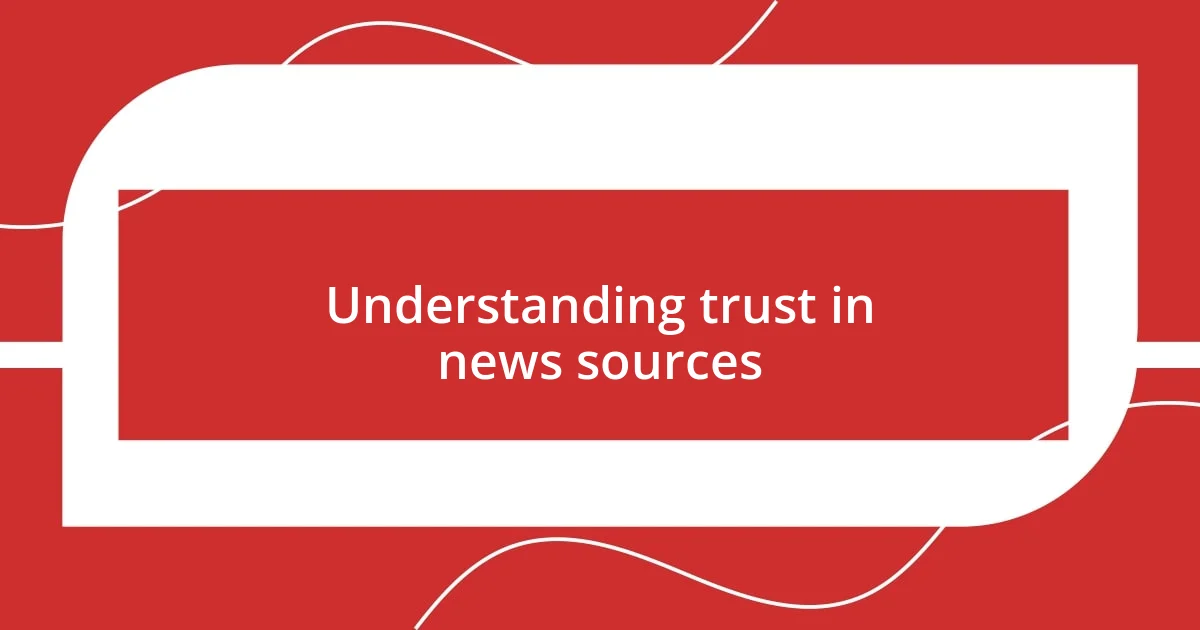
Understanding trust in news sources
Trust in news sources can often feel like a delicate balancing act. I remember a time when I stumbled across a headline that grabbed my attention because it seemed to support my initial beliefs. But then, after a moment of reflection, I questioned the credibility of the source. Have you ever found yourself in a similar situation? It’s a common experience, and it highlights how pivotal our emotional responses are when consuming news.
When examining international news, the credibility of the source often influences our perceptions of global events. I once relied heavily on a particular channel, believing it would provide unbiased reporting. However, I soon realized that its coverage was often skewed, reflecting a specific political stance. This realization left me feeling deceived and made me reevaluate the importance of seeking diverse perspectives. How often do we pause to consider the underlying motives of the outlets we trust?
Building trust in news is an ongoing journey that requires critical thinking and reflection. I recall an instance where I discovered a lesser-known organization that reported facts backed by solid evidence. The relief I felt was palpable, as if I had finally found a reliable friend in a crowded room of noise. Don’t you think it’s crucial for us to navigate this landscape carefully, ensuring we don’t just consume news, but also engage with it thoughtfully?
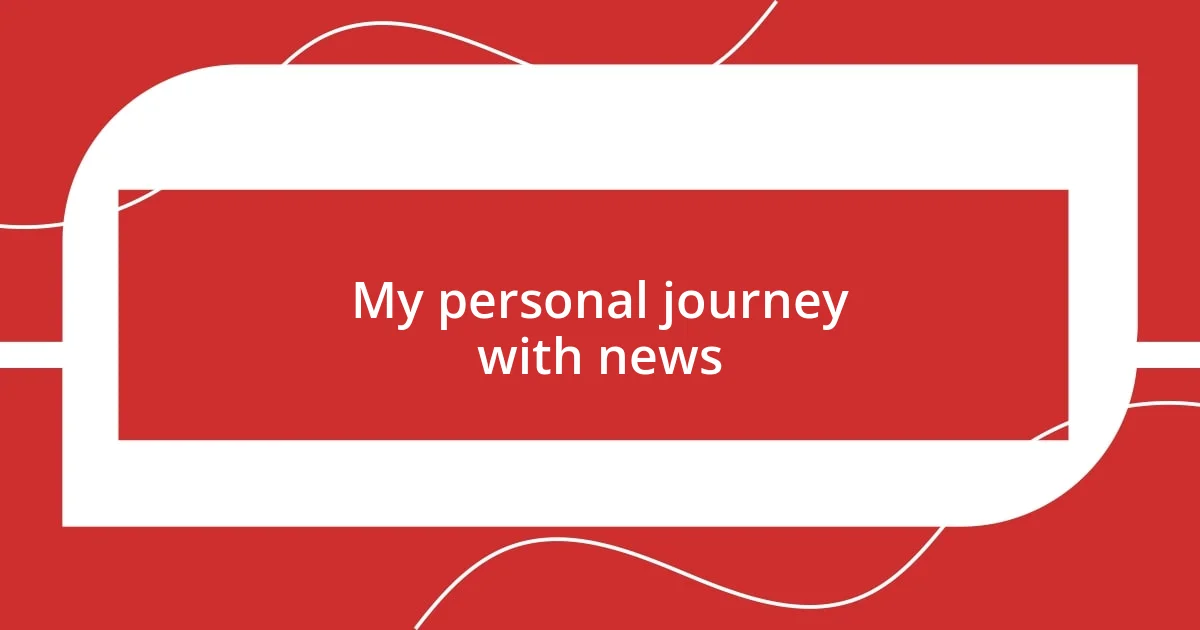
My personal journey with news
I’ve had my share of news mishaps that shifted my perspective dramatically. For instance, there was a period when social media was my go-to source, and I vividly remember reading a passionate post about a current event. It stirred something in me—maybe anger or determination. However, a quick fact-check later revealed the post was riddled with inaccuracies. That moment of disillusionment forced me to rethink where I was getting my information from. It’s a feeling I don’t want anyone else to experience.
- Feeling overwhelmed by the constant stream of news
- Discovering the importance of fact-checking
- Realizing emotional responses can cloud judgment
- Learning the value of diverse news sources
- Finding reliable outlets changed my news consumption habits
Along the way, I began to notice how different outlets framed the same story in starkly different ways. I can recall sitting down with a friend to discuss a controversial issue that had been plastered across the headlines. We pulled articles from opposing sides and, as we compared them, it felt as if we were peeling back layers of bias. I was intrigued—and a bit unsettled—by how each narrative shaped our understanding of the facts. This experience nudged me toward a commitment to seek out multiple viewpoints before forming my opinions.
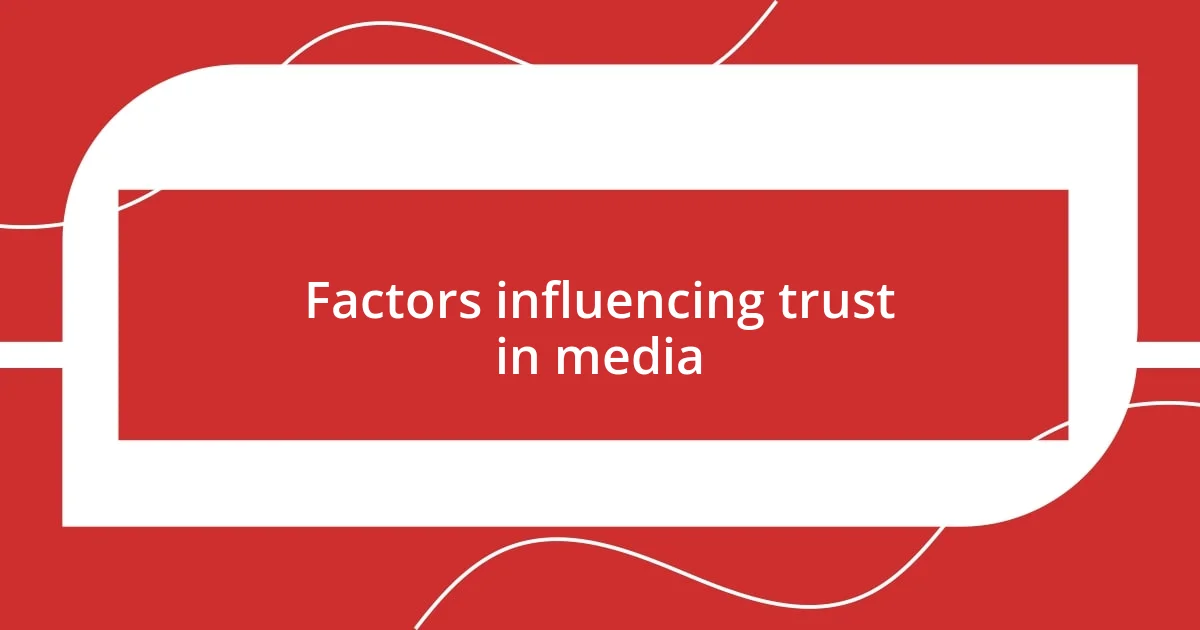
Factors influencing trust in media
One of the primary factors that affect trust in media is the perceived transparency of the organization. I remember my excitement when I stumbled upon a news outlet that openly shared its sources and methodologies. It was refreshing to see how they detailed their research process. This openness not only increased my trust but also made me more confident in the information I was reading. When we feel like we can peek behind the curtain, it builds a unique bond between the audience and the media, don’t you think?
Another critical aspect is the reputation of the journalists and the outlet itself. I once followed a particular journalist whose investigative work I admired. However, as news broke about their involvement in unethical practices, my trust crumbled. This incident emphasizes how our faith in media is often tied to the individuals behind the stories. Consistency in quality and ethical standards can profoundly shape whether we embrace or reject a news source.
Finally, the context in which news is presented plays a vital role in shaping our trust. I vividly recall an instance when a sensational headline caught my eye; it led to a disappointing article full of speculation without any facts. It was a stark reminder that sometimes a flashy presentation can act as a smokescreen, hiding a lack of real substance. Engaging with news critically has become a priority for me ever since that moment, and I’m curious—how do you dissect the information you consume?
| Factor | Description |
|---|---|
| Transparency | Expecting details about sources and methods boosts trust. |
| Reputation | Trust can be easily lost with unethical behavior of journalists. |
| Context | Presentation style can sometimes disguise a lack of substance. |
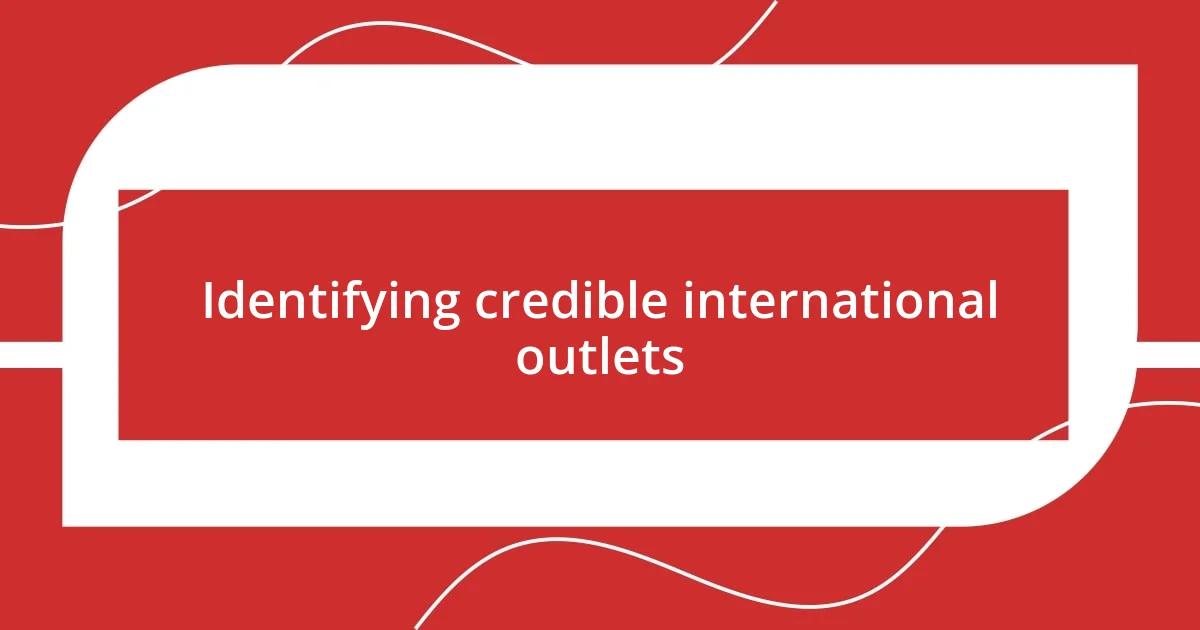
Identifying credible international outlets
Identifying credible international news outlets is a journey shaped by experiences and observations. I remember the first time I sought news from a foreign source; the names were unfamiliar, and the articles seemed dense with cultural nuances. It was a bit daunting, admittedly. To help navigate, I started looking for reputable international organizations that had established a track record for rising above bias and sensationalism. This emphasis on corroborated information felt like a safe harbor amid a stormy sea of dubious news.
As I explored new outlets, I discovered the importance of language and tone in assessing credibility. I once clicked on an article, but the aggressive headlines and clickbait phrases churned my stomach. It made me question the integrity of the entire outlet. I realized that credible sources often prioritize calm, unambiguous language, which allows for a clearer understanding of complex issues without unnecessary emotional manipulation. Ask yourself: do the words used resonate with an objective approach or do they aim to provoke a reaction? That distinction can greatly inform where you choose to get your news.
Moreover, I began to pay attention to the variety of perspectives presented. Some of my trusted sources were adept at not just reporting facts but also at providing context and analysis. I distinctly recall a piece on climate change that included insights from scientists, activists, and even skeptics. It sparked my curiosity and pushed me to think critically about the information. It made me wonder how a story would change if told from just one viewpoint. Seeking out outlets that embrace this diversity of thought has not only enriched my understanding; it’s fostered a deeper sense of trust because I can see the bigger picture.
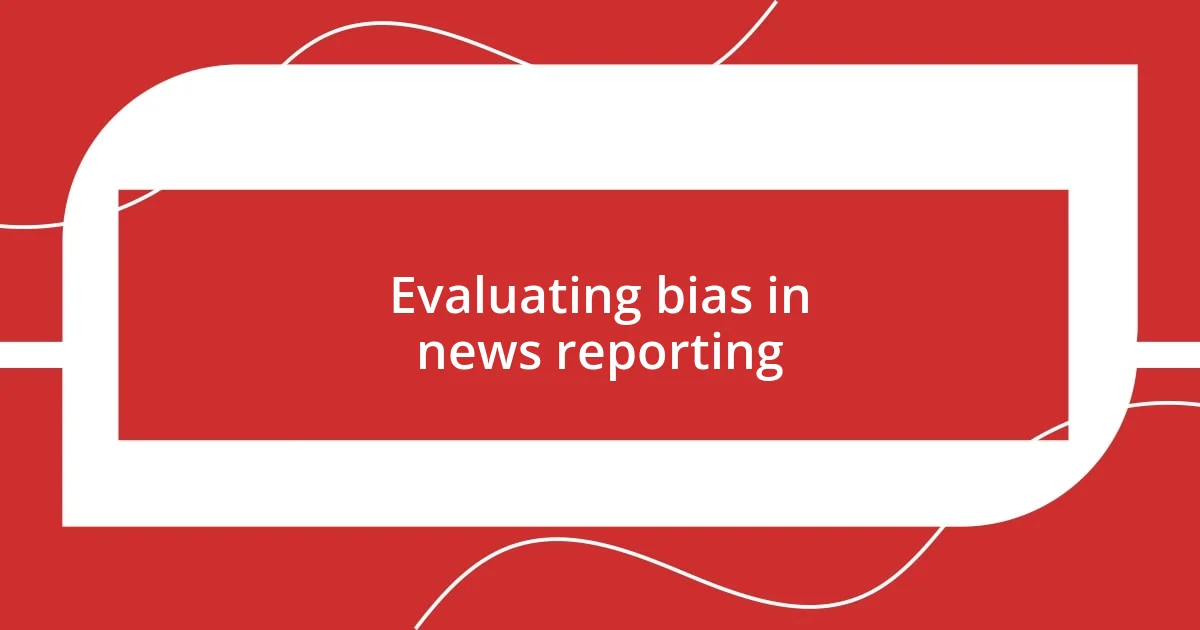
Evaluating bias in news reporting
Evaluating bias in news reporting is essential for discerning fact from opinion. I often find myself questioning the underlying motives of a headline—does it aim to inform or provoke outrage? When I read an article that feels imbalanced, I can’t help but wonder who benefits from the narrative being painted. This has led me to actively seek out multiple perspectives before forming my own opinion, a habit I encourage others to cultivate as well.
I recall a time when I encountered a deeply polarizing story during a major political event. The coverage varied dramatically between two outlets, and it was enlightening to see how selective language and framing shaped public perception. It was a wake-up call for me; I realized that bias doesn’t always appear overtly. Instead, it can seep into the subtle choices made by journalists, such as which statistics to highlight or what voices to amplify. Do you pay attention to these nuances when consuming news?
Ultimately, I’ve learned to engage with each news piece through a critical lens. For instance, while reading about economic policies, I now ask myself about the sources cited and the diversity of voices involved in the discussion. I’ve witnessed how a single story can transform when viewed through different reporting angles. This practice not only enriches my understanding but also empowers me to challenge narratives that seem one-sided or uninformed. How do you approach news with a discerning eye?
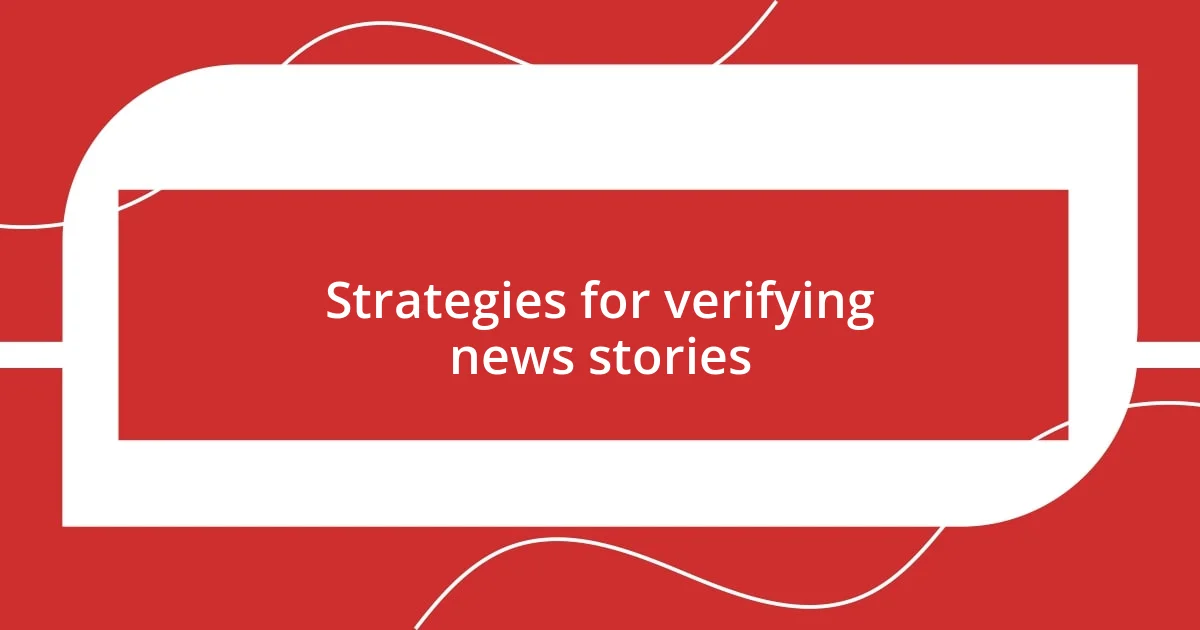
Strategies for verifying news stories
When it comes to verifying news stories, I’ve found that cross-referencing information is one of the most effective strategies. I remember a particular instance where I read a compelling piece about international trade agreements. Intrigued, I scrambled to find similar coverage from other outlets. Low and behold, there were stark discrepancies in the details. It taught me that no single source has the full story—different journalists may uncover different facets of the issue, and it’s crucial to piece them together to get a clearer picture.
Another strategy involves checking the publication date and context of an article. I once stumbled upon a sensational story about a natural disaster, only to realize that it was recirculated from years ago. The initial shock quickly turned into frustration; I felt manipulated by the sensationalism of it all. This experience reinforced my habit of ensuring that I only engage with timely and relevant news. Just like you wouldn’t want to consume spoiled food, it’s vital to assess whether the news is fresh and pertinent.
Additionally, I strive to look for primary sources or official statements that support a news story. During a discussion on public health, I engaged with an article citing a clinical study but failed to trace it back to the original research. Once I took the time to locate the study, I found not only the data but also the parameters and potential biases encompassed within it. The depth of insight I gathered was invaluable. How often do we skip this step, assuming the cited sources have been vetted? The benefits of digging deeper are immense, transforming passive consumption into active engagement.
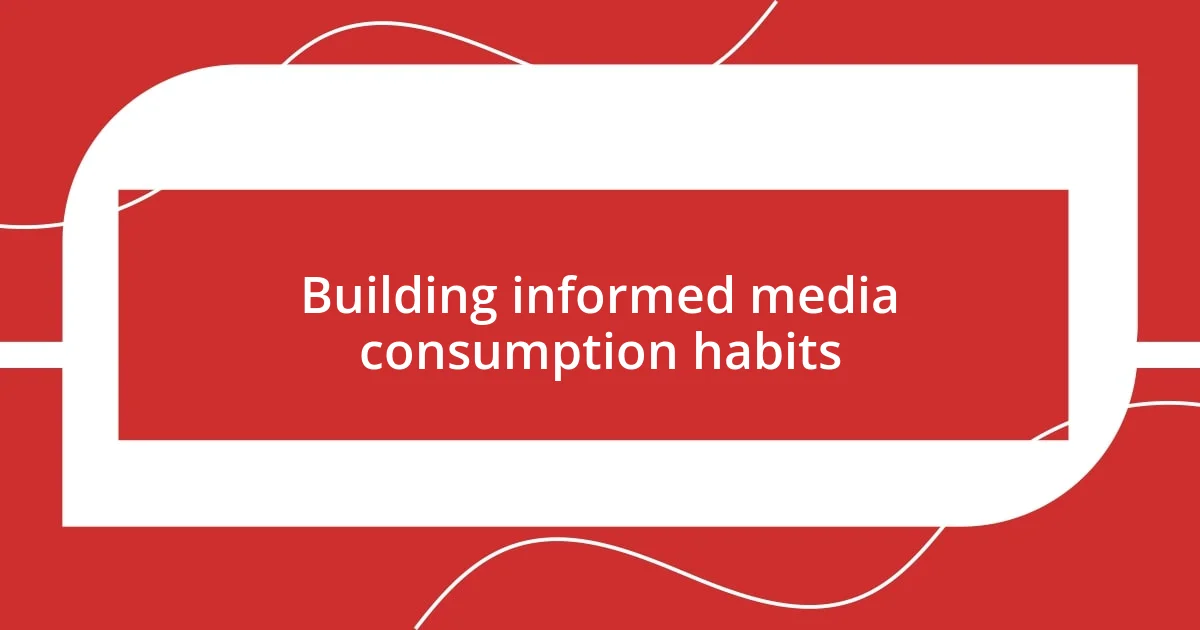
Building informed media consumption habits
Building informed media consumption habits is something that really resonates with me. I’ve come to understand that simply reading a headline isn’t enough. One day, I clicked on a trending article that claimed to unveil a political scandal. The initial rush of excitement faded quickly when I noticed the article relied heavily on unnamed sources and sensational language. It woke me up to the reality that habitually consuming content without delving deeper can lead to misunderstanding — or worse, misinforming others. How often do we get swept up in the frenzy of the latest story without asking these critical questions?
Another practice I’ve developed is setting a personal guideline for myself: I won’t rely on a single news source for my daily updates. I recall discussing an international event with a friend, who was convinced by one channel’s framing. I pulled up multiple perspectives on my phone, and it was fascinating to see how narratives shifted based on who was reporting. This approach not only widens my understanding but encourages thoughtful dialogue with those around me. Have you ever found that discussing contrasting viewpoints enhances your own views?
Moreover, I pay close attention to the authors behind the stories. For instance, I read an article about environmental policies and was moved by the passionate voice behind the words. I took the extra step to check out the author’s background and other pieces they had written. It was illuminating to see how their expertise influenced their take on the subject. This experience highlighted something I believe to be vital: understanding where information comes from enriches the reading experience and fosters trust. Are you as curious about the voices behind the articles you read, and how that shapes the news you consume?
